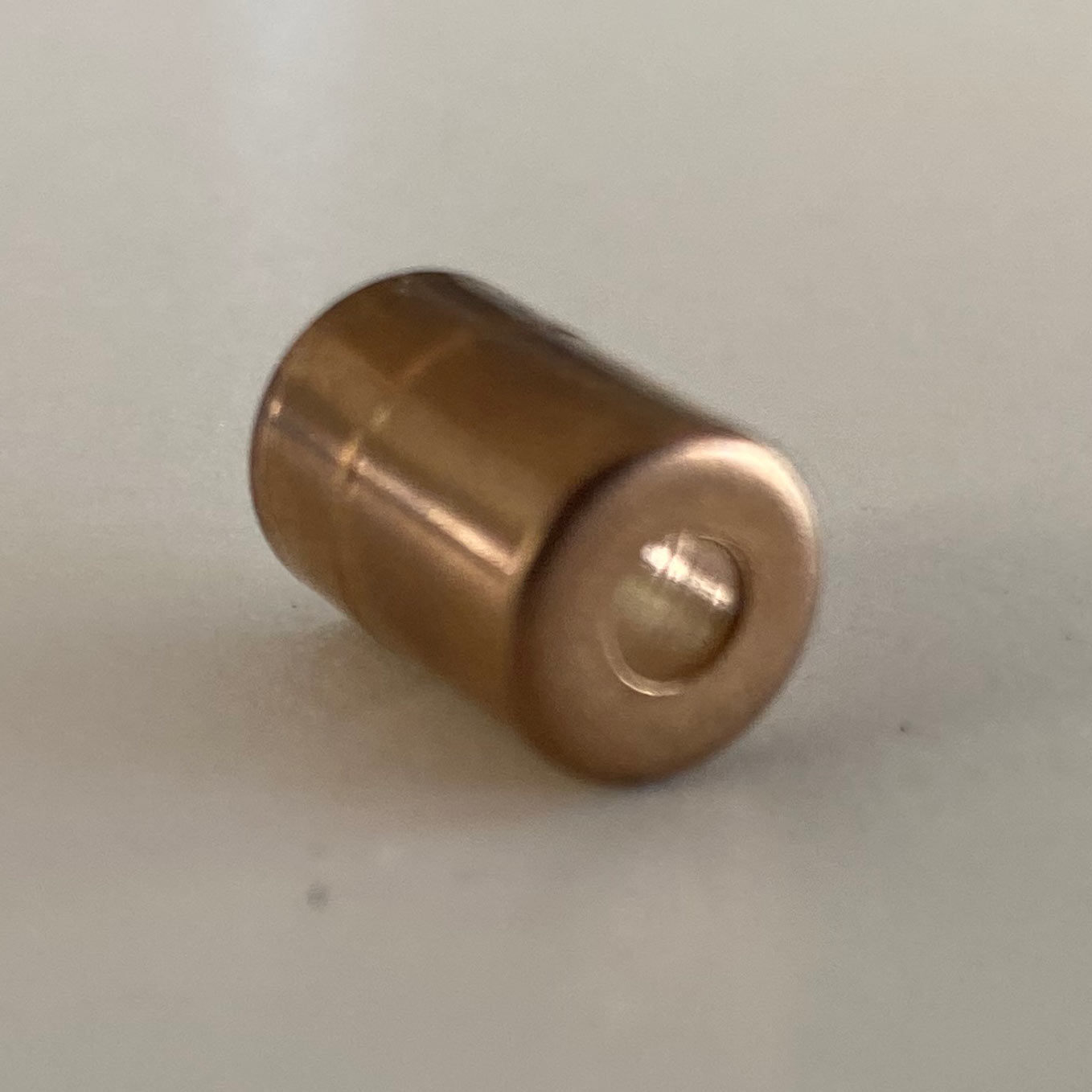Evans’ deep drawn and progressive die copper stampings
Evans excels in complex, tight-tolerance copper and copper alloy stampings, from miniature (.030” OD) to midsize (13.5” OD).
Copper and its alloys are widely used in deep draw and flat stamped products because they have excellent electrical and thermal performance, good resistance to corrosion, high ductility and relatively low cost.
Copper is non-magnetic, non-sparking and non-bacterial. Because it is low in the reactivity series, it is slow to corrode. With medium strength and high fatigue resistance, copper and its alloys are primary metals for electrical applications.
Copper has a density of 8.94 g/cm3 , or .323 lb/cu.in., elastic modulus of 115 GPa, or 17x 10^6 psi, and melting temperature 1083°C, or 1981°F. With a thermal conductivity of about 231 BTU/ (hr-ft- deg F), it is 30 times more conductive than steel.
Copper Alloys – Brass, Bronze, ComBro, Phos Bronze, BeCu, Cupro Nickel
While copper, used for 10,000 years, is one of mankind’s first metals, bronze, in use for over 5,000 years, is no youngster. It is considered the world’s first alloy, predating brass by three millenia. Brass objects have been found in the homes of ancient Rome, dating back to 100 B.C. but not before.
Bronze is copper alloyed with tin or zinc – usually 90%, or more, copper.
Brass is copper alloyed with zinc – most commonly with 30 percent zinc.
Red brass is most commonly 15 percent zinc.
CuproNickel — Cu + Ni — may be 69.4% to 96% copper.
Standard CuproNickelTin C70260 is 97% copper, 2% tin, 0.5% silicon.
Brass, Bronze, and Phos Bronze (Cu-Sn-P) are commonly used in both deep drawn and flat stamped components. Commercial bronze, “combro”, is most commonly 90% Copper- 10% zinc alloy and has good applications as a connector.
BeCu — a Copper Beryllium alloy known as Beryllium Bronze, is commonly used in hermetic seals because the alloy has nearly the same thermal expansion as the glass used in those seals. As the glass expands and contracts, the metal expands and contracts equally so the glass does not crack.
Of the roughly 16 basic types of wrought copper alloys, fewer than half are commonly used for making small stamped and drawn parts, especially for electrical and electronic conductors and contacts. In some cases we have these products heat treated and/or plated with coatings, like tin, after forming.
Working on a project using core iron, carbon steel? If we can help, please click here.

